Introduction: As a behemoth that has disappeared from the earth for hundreds of millions of years, dinosaurs, the former overlord of the earth, have long been known to people, but do you know their classification? Now join the special group to learn more about the types of dinosaurs!
1. Classification outline
Kingdom Protista - Chordata - Vertebrates - Sauriformes - Dipsids
Sauropoda: Theropods, Sauropods
Ornithischia: Ornithopods, Stegosaurs, Ankylosaurs, Ceratopsians, Pachycephalosaurs
Dinosaurs are all animals belonging to the class Sauromorpha and Dipsima, which are divided into two orders: Saurischia and Ornithischia. Let us take a look at their differences:
1. Sauropoda includes two suborders, namely theropods and sauropods. Theropods include all carnivorous dinosaurs, while sauropods are a branch of large herbivorous animals. .
2. Ornithischia: Ornithischia includes five sub-categories: ornithopods, stegosaurs, ankylosaurs, ceratopsians and pachycephalosaurs. They are basically small herbivorous dinosaurs and some have long Weird dinosaurs.
2. Detailed classification of saurischian dinosaurs
1. Theropods: Theropod dinosaurs are basically carnivorous dinosaurs, such as bipedal carnivorous dinosaurs like Tyrannosaurus rex and Velociraptor. They mainly lived from the Triassic to the Cretaceous. Let’s introduce the beasts in detail below. The suborder Podopod represents the dinosaurs.

(1) Rex Dragon
Also called Tyrannosaurus Rex, people usually call it Tyrannosaurus Rex. It is one of the most famous dinosaurs in the world. Tyrannosaurus rex lived in the late Cretaceous period. Their average body length was 11.7 meters, with a maximum length of 14.6 meters, an average hip height of 4 meters, and a maximum hip height of more than 5 meters. Their average weight was 11 tons, and the heaviest was 14.85 tons. It is the largest known animal in the world. One of the largest carnivorous dinosaurs.
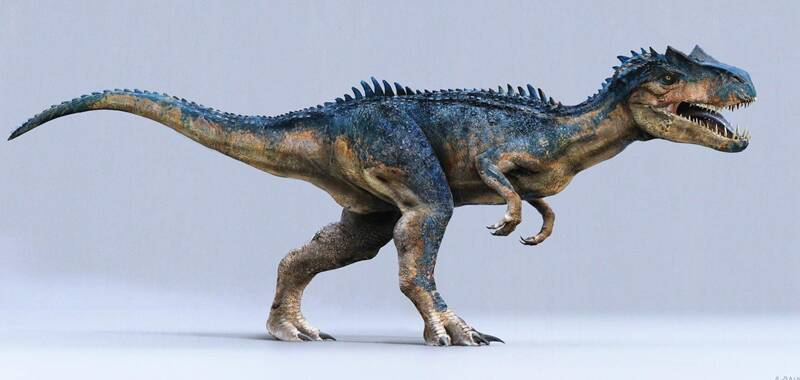
(2) Allosaurus
Allosaurus, also known as Leaposaurus, was a large bipedal carnivorous dinosaur that lived in the late Pauline Period. The average length was 10 meters and the longest could reach 13 meters. Allosaurus is a strange-looking dinosaur with a large head and a crest of horns above its eyes. It is also one of the most well-known and easily recognized dinosaurs. Allosaurus had a larger brain and was considered a more intelligent carnivorous dinosaur.
2. Sauropods: Sauropod dinosaurs are basically herbivorous dinosaurs, such as four-legged large herbivorous dinosaurs like Diplodocus and Mamenchisaurus. They mainly lived in the Jurassic and Cretaceous periods. Let’s introduce the representative dinosaurs of the order Sauropods.
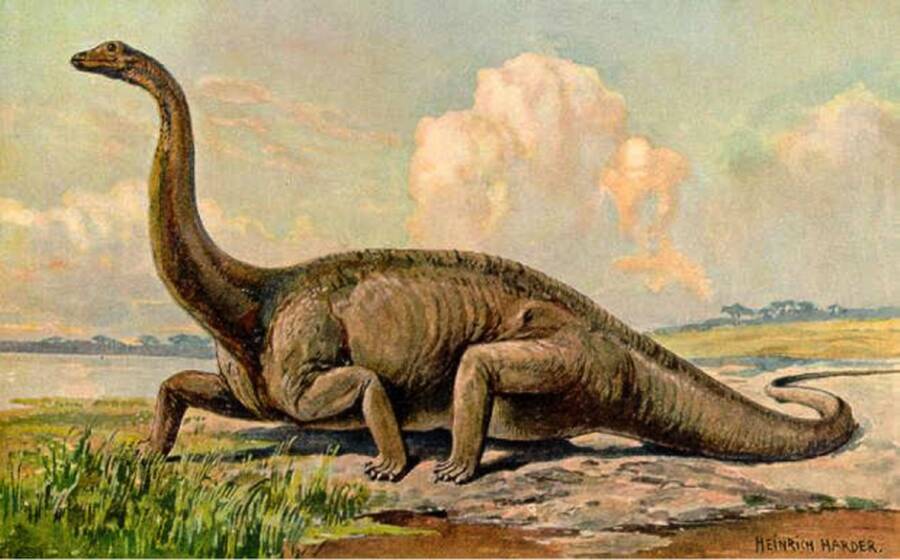
(1) Diplodocus
Diplodocus weighs 10-20 tons and is 25-27 meters long. It lived in North America in the late Jurassic. It is one of the dinosaurs with the longest neck in the world. The length of Diplodocus's neck can reach three stories high, and its waving tail can also help it drive away carnivorous dinosaurs with delusions of mind. There is a special kind of Diplodocus hasti in the Diplodocus family, which is the largest known dinosaur at present. It is more than 50 meters long and weighs about 100 tons. It walks like an earthquake and is called Seismosaurus.
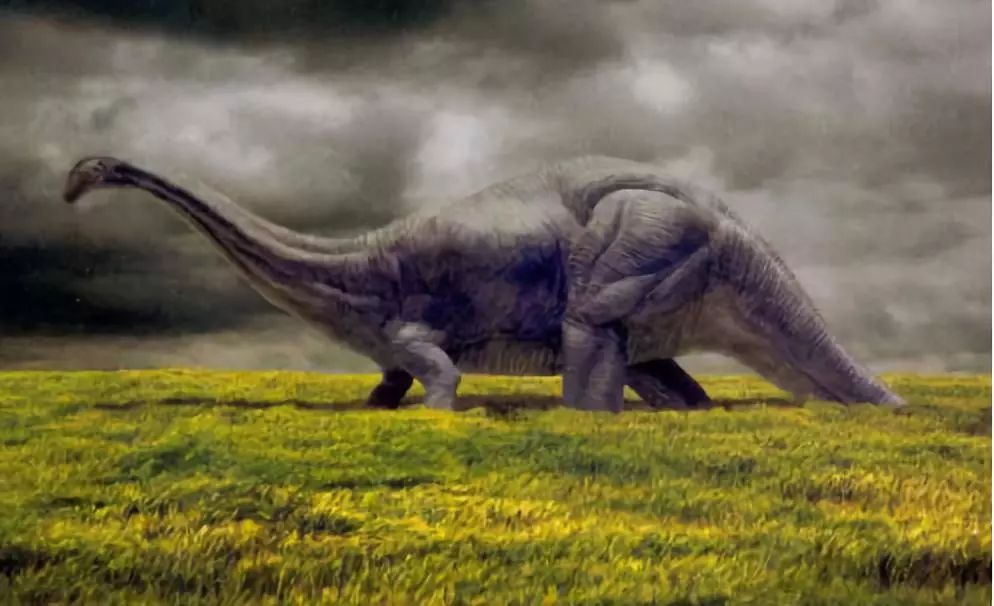
(2) Apatosaurus
It was formerly called Brontosaurus and is one of the most famous dinosaurs. Apatosaurus lived in the late Jurassic period. They are one of the largest dinosaurs that existed on land. They are about 21-23 meters long. Its neck is 6 meters long, its tail is about 9 meters long, its hips are about 4.5 meters high, and its weight At least 23 tons. Apatosaurus likes to move in groups. They live in plains and forests and may travel in groups. When a large group of Apatosaurus dragons came from a distance, the dust must have covered the sun and the sound was like thunder.
3. Specific classification of ornithischian dinosaurs
1. Ornithopods: Ornithopods are the suborder Ornithopods, which are the most commonly discovered category of dinosaur fossils. Ornithopods are characterized by a generally flat mouth and a separate predentary bone in front of the mandible.
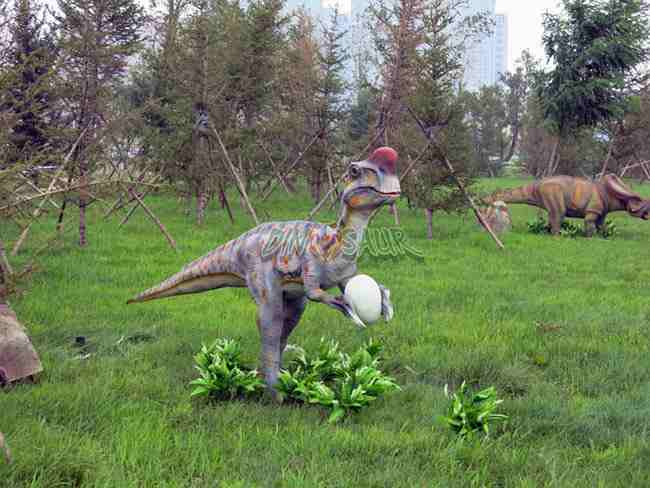
(1) Oviraptorosaurus
Oviraptor, also called Oviraptor, is a Cretaceous carnivorous dinosaur that lived in Asia. It is 2 to 3 meters long and weighs 200 to 360 kilograms. Its mouth is somewhat similar to a bird's beak. Although it has no teeth in its mouth, it can grind egg skins because of its tight and hard jaws. Its front feet have three toes. The claws on the front toes are hook-shaped to facilitate grabbing prey. The rear toes have sharp claws, mainly to better grip the ground and speed up running.
2. Pachycephalic dinosaurs: Pachycephalic dinosaurs are very strange. Their skulls are very thick, which is very rare among all animals. The impact of their heads should be very strong. Most of them live in Cretaceous period.
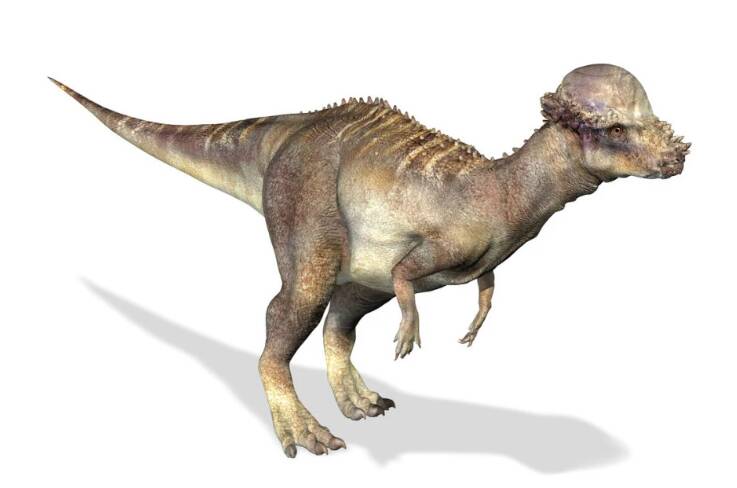
(1) Pachycephalosaurus
Pachycephalosaurus is a Cretaceous herbivorous dinosaur that lived in North America. It weighs 3-4 tons and is 4-5 meters long. It is said that the thickness of the skull of Pachycephalosaurus is 50 times that of the human skull. Because of the protection of the thick skull, Pachycephalosaurus is very good at butting with its head. When it wants to possess a female Pachycephalosaurus or wants to When showing off its strength in front of others of its kind, it will choose to butt its head. When a group of Apatosaurus dragons came from a distance, the dust must have blocked the sun and the sound was like thunder.
3. Stegosaurus dinosaur: Stegosaurus dinosaur is also called Plateosaurus. Its physical characteristics are a large body, a small head, a short neck, and an arched back. The hind limbs are longer than the forelimbs. It walks on four legs and has two rows of symmetrical sword plates of different shapes on its back. It is basically a herbivorous dinosaur.
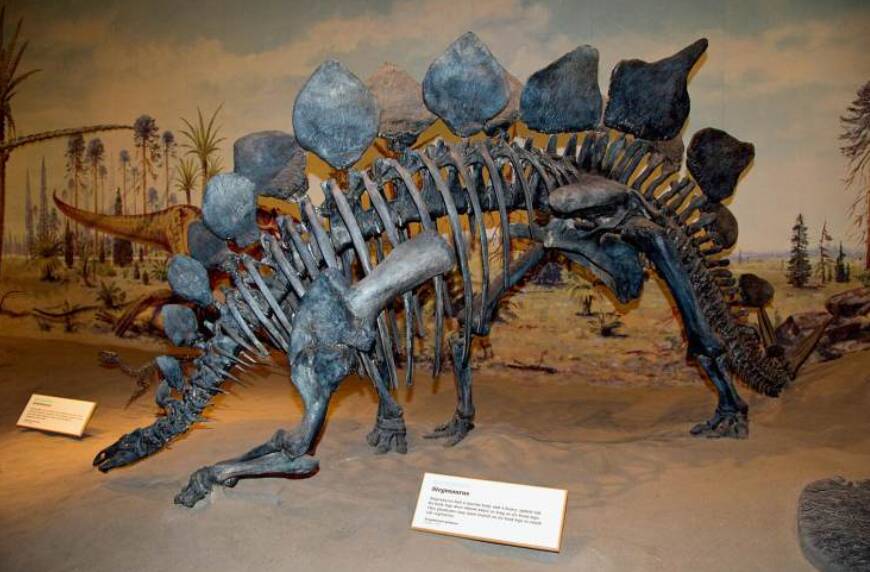
(1) Stegosaurus
An adult Stegosaurus is about 12 meters long and 7 meters tall, 12 meters long and weighs 4 tons. Stegosaurus lived in the late Jurassic and early Cretaceous periods and was a typical herbivorous dinosaur. They are thought to have inhabited the plains and lived in nomadic groups alongside other herbivores such as leopards. The biggest feature of its appearance is a row of triangular bone plates on its back and four spikes on its tail. The dangerous tail with four spikes protects it from predators.
4. Ankylosaurus Porosaurus: Ankylosaurus dinosaurs are basically herbivorous dinosaurs that walk on four legs. Their bodies are covered with a thick layer of bone armor. They are the dinosaurs with the strongest defense. Most ankylosaurs All dinosaurs appeared in the Cretaceous period.
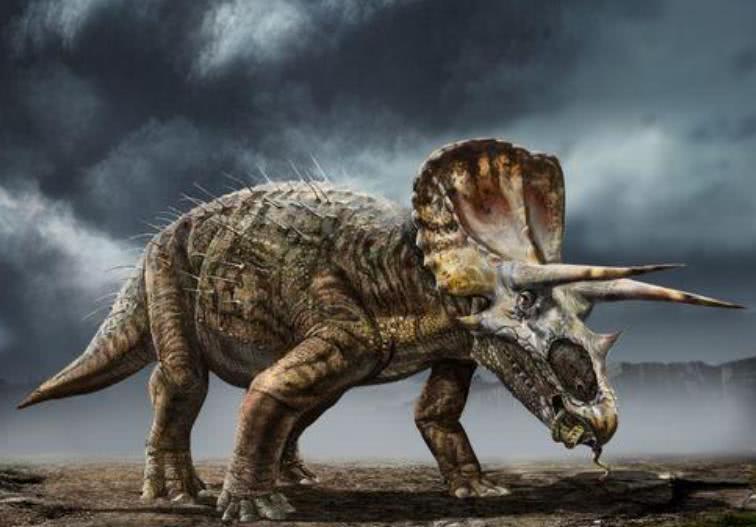
(1) Triceratops
Triceratops, also called Triceratops, lived in the Cretaceous Period. It was a medium-sized four-legged herbivorous dinosaur with a total length of about 7.9 to 10 meters, a hip height of 2.9 to 3 meters, and a weight of 6.1 to 12 meters. Ton. The most striking feature of Triceratops is their large head, one of the largest of all land animals. They have thick skin and hard horns and head shields, making Triceratops one of the most powerful herbivorous dinosaurs in the Cretaceous. Even Tyrannosaurus rex would not dare to prey on them easily.
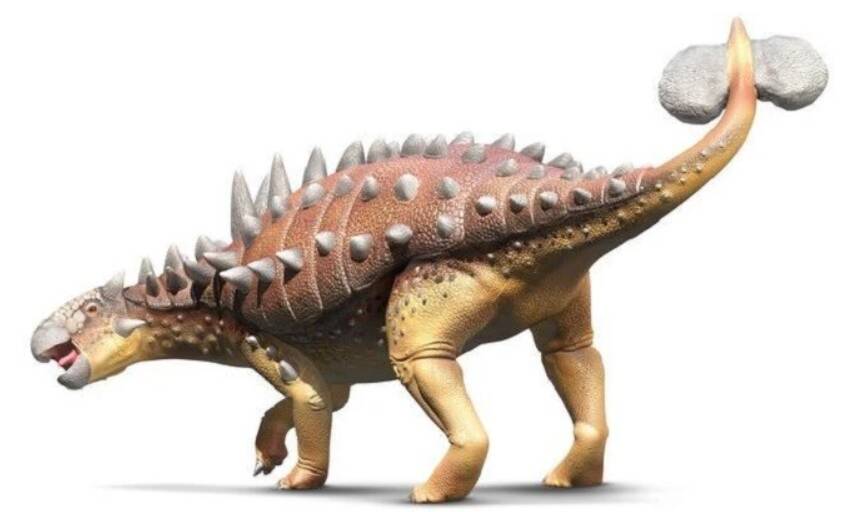
(2) Baotoulong
The huge Baocephalosaurus was wrapped in thick hard bone plates from head to tail. It also had four protruding horns on its head, and there were obvious bone spikes on the front and back of its body. . When a carnivorous dragon attacks it, it will wave its long tail with bone spurs to repel the attacker.
5. Ceratopsian dinosaurs: Ceratopsian dinosaurs are basically herbivorous dinosaurs that walk on four legs. Their characteristic is that they have various horns on different positions on their heads. Like rhinos, they are highly aggressive. Most lived during the Cretaceous period.
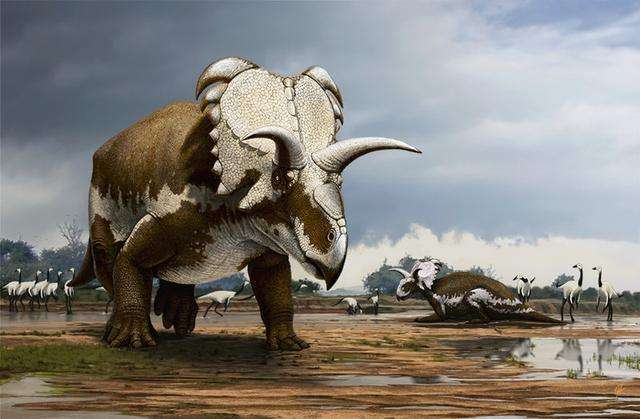
(1) Pentaceratops
Pentaceratops was a Cretaceous herbivorous dinosaur that lived in North America. It weighed 5 tons and was 6 to 7 meters long. Pentaceratops is called a face with five horns because it has five horns on its head. Among the five horns, there are two large horns on the top of its head and one horn above its nose. . But the two slightly smaller horns growing on the face are actually not horns, but bony protrusions.
Have you not seen the familiar pterosaurs, plesiosaurs, ichthyosaurs, etc.? In fact, they are not dinosaurs, but close relatives of dinosaurs. After reading these, do you have a better understanding of dinosaurs?
animal tags: Dinosaurs classification species vertebrates sauriformes diapsids saurischians ornithischians theropods
We created this article in conjunction with AI technology, then made sure it was fact-checked and edited by a Animals Top editor.